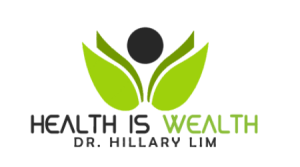Scientists from the TU Darmstadt (Germany) and Rensselaer Polytechnic Institute (US) have challenged a view on how drugs are delivered to our systems. This article talks about a particular view on fatty acids and their roll in drug delivery to our bodies. What was unknown until the completion of this study is that Unsaturated Fats can help to facilitate the delivery of special medications and molecules.
Chemists, biologists and pharmacologists deal with the question of how complex active substances can be introduced into cells such that they are rapidly and easily available. Building on earlier research, interdisciplinary teams of scientists, with biology Professor M. Cristina Cardoso (TU Darmstadt), physics Professors Henry D. Herce (RPI, NY, USA and TU Darmstadt) and Angel E. Garcia (RPI, NY, USA), and chemistry Professor Christian P. R. Hackenberger (FMP, Berlin), have made some important advancements.
Time and time again, scientists are confronted with the particular biochemical properties of cell membranes, which do not allow large molecules to pass and reach the site inside the cell where they are needed. The scientists presented their results in two recently published articles in the journals Journal of the American Chemical Society and Angewandte Chemie.
Fatty acids open a new door to help curing diseases
A central dogma in cell biology is that charged molecules cannot directly cross into cells. Cells are enclosed by a lipid membrane, which forms a strong barrier, separating the interior and exterior of the cells. This barrier is the most important limitation for potent therapeutic compounds to reach the interior of cells and cure or destroy them, as it would be desirable in the case of, for example, cancer cells.
Scientists from the TU Darmstadt (Germany) and Rensselaer Polytechnic Institute (US) have now challenged this dogmatic view of the cell. In a ground breaking work published in the prominent chemistry journal “Journal of the American Chemical Society,” they have shown how certain types of positively charged molecules, known as cell-penetrating peptides (CPPs), can directly open transient nano-tunnels across the cell membrane and inject into cells therapeutic drugs.
The health benefits of unsaturated fatty acids are well known. What was not known until now is that free fatty acids, naturally present on the cell membranes, can also facilitate the transport of these very special charged molecules.
This new research reveals how fatty acids form a complex on the cell membrane with CPPs, this complex nucleates a small transient channel connecting the interior and exterior of the cell, and the therapeutic drugs can travel through these tunnels into the cells. The fatty acids-CPPs complex can be thought as a syringe able to inject drugs into each individual cell. This complex acts as a molecular needle through which other therapeutic compounds can be directly delivered into the cells.
Cell-penetrating peptides have been known to enter cells for over 20 years although the mechanism has remained mysterious and a matter of intensive research. Understanding now how they are able to cross the cell membrane barrier will allow to harness the delivery of potent drugs that previously failed to enter cells but could now exert their beneficial effects inside cells. With this trick, new drugs could be developed to fight a wide range of diseases.
Since these peptides are highly charged the dogmatic view assumed that they might exploit pathways naturally present in cells to absorb nutrients from the environment. These pathways mainly trap and rapidly degrade the nutrients they absorb (which can be thought of as a digestive system of cells). This would be a problem to deliver intact therapeutic compounds. However, this new work shows that the fatty acids-CPPs complex directly delivers therapeutic compounds and thus bypasses the digestion machinery/degradation pathway of the cell. The drugs can directly enter the cell through the nano-tunnels and become readily available to work on their targets.
Fatty acids are essential to all forms of life and this work also shows that this transport mechanism present in human cells is also present in plants, insects and animals opening the door to target cells from all kingdoms of life.
Larger payload thanks to cyclization
Cell-penetrating peptides (CCP) are short peptides, which can penetrate the membrane of a cell and act as vehicles for other molecules attached to them transporting these molecules into the cell. However, the transport is limited to small molecules. Biologists at the TU Darmstadt and the Max Delbrück Center for Molecular Medicine (Berlin) had previously shown that the transport speed and transport rate of CPPs significantly improve when they are cyclicized, thus reshaped into a ring. The scientists now investigated whether cyclization is also suitable for introducing larger “cargos” into the interior of living cells, such as whole proteins. As the study, recently published in the journal “Angewandte Chemie,” showed, the simple structural change into a circular shape was sufficient to accomplish this and make the proteins coupled to the cyclic CPP directly bioavailable in the cell. “We have introduced various materials into cells of plants, animals and bacteria using the peptides modified in this way, as all cells have a plasma membrane with similar basic components,” says Cristina Cardoso, research area of Cell Biology and Epigenetics, department of Biology, Technische Universität Darmstadt.
This finding is of importance for basic research because in this way, for example, tracers can be introduced into cells. However, practical areas of application, such as in medicine and cosmetics, have also opened up, says Cardoso. “We are interested in treatments taking advantage of local administration of active substances, for example through the skin using creams.” It is possible that drugs could later be introduced into skin cells in this way or even whole proteins with a cosmetic and therapeutic function.
Source: http://www.sciencedaily.com/releases/2015/03/150331074205.htm?
The post Insights into the Drug Delivery Process appeared first on AZIM Solutions.



 CONDIMENT: Soy Sauce
CONDIMENT: Soy Sauce REPLACEMENT: Tamari (multiple brands) or Bragg’s Liquid Aminos
REPLACEMENT: Tamari (multiple brands) or Bragg’s Liquid Aminos


 CONDIMENT: Soy Sauce
CONDIMENT: Soy Sauce REPLACEMENT: Tamari (multiple brands) or Bragg’s Liquid Aminos
REPLACEMENT: Tamari (multiple brands) or Bragg’s Liquid Aminos



